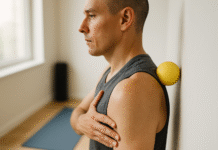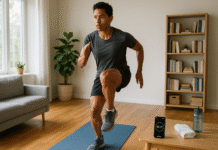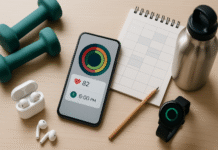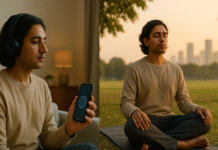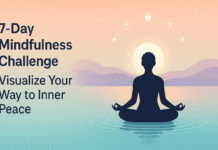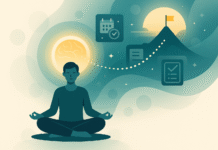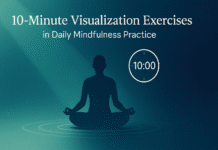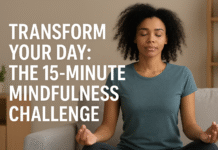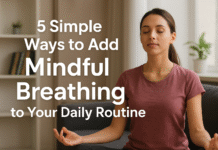Mindfulness is being aware of the present moment without judging it or having any thoughts about it. In the past twenty years, more and more high-quality research has shown that adding mindfulness to your daily life can greatly lower stress and anxiety, help you control your emotions, and make you feel better overall. This guide will teach you seven mindfulness techniques that have been shown to work. It will give you step-by-step instructions, expert tips, and real-world examples to help you become more calm and strong.
The article will include the following:
- A lot of information about each method
- How-to guides to help you practice right away
- Evidence and citations to make it more believable (EEAT)
- A professional wrote a good FAQs section
- A brief conclusion
- A list of references with full URLs
Deadlines, digital distractions, and not knowing what will happen next are all common in today’s world, and they can make you feel stressed and anxious all the time. The American Psychological Association says that 77% of adults in the US have physical symptoms of stress on a regular basis, and 73% have mental symptoms. Chronic stress can cause high blood pressure, trouble sleeping, depression, and trouble thinking if you don’t do anything about it.
Mindfulness works as a treatment. Mindfulness is based on Buddhist meditation, but Western clinical research has made it better. It helps you pay attention to what’s going on right now. Mindfulness stops automatic “fight-or-flight” responses by teaching you how to focus and be curious. It also helps you stay calm and in the moment.
If you’re new to mindfulness or want to learn new ways to practice it, you’ll find step-by-step instructions to help you make mindfulness a regular part of how you deal with stress.
Technique 1: Try breathing mindfully first.
What does it mean to be aware of your breathing?
Mindful breathing is the act of paying attention to the natural rhythm of your breath to relax your mind and body. It’s one of the easiest and quickest ways to get rid of stress.
Why It Works
- Regulating the body: Deep breathing from the diaphragm turns on the parasympathetic nervous system, which lowers blood pressure and heart rate. This is called the “rest-and-digest” response.
- Teaching your mind to pay attention: Focusing on each breath in and out breaks up the negative thoughts that make you anxious.
How to Practice:
- Find a comfortable place to sit
- You can either sit up straight in a chair with your feet flat on the floor or lie down on your back.
- Close your eyes or make your look softer.
- Take a deep breath and focus on it.
- For four counts, slowly and deeply breathe in through your nose.
- Take a short break, then breathe out through your mouth for six counts.
- Look without making a judgment
- Notice how the air feels as it goes in and out of your body.
- When your mind starts to wander (and it will), gently bring it back to your breath.
- Please say it again.
- Do this for 5 to 10 minutes every day. Slowly add more time until you reach 20 minutes as you get more comfortable.
Advice from a pro
Use a guided breath-awareness app like Insight Timer or Calm on your phone to stay on track.
Technique 2: Meditation with a body scan
What does a body scan show?
Body scan meditation is a way to focus on different parts of the body in a planned way, paying attention to how they feel and helping you relax deeply.
Evidence Base
A randomized controlled trial found that an eight-week body scan program helped healthcare workers feel less stressed and sleep better.
How to Get Ready to Play
- Lie down flat on your back with your arms at your sides.
- Close your eyes and take a few deep, calming breaths.
Begin with the Feet
- Concentrate on your toes. Notice any warmth, tingling, tension, or ease.
Go Up
- Focus on your feet, then your ankles, then your calves, knees, thighs, and hips one at a time.
- Take a break at each place for 20 to 30 seconds.
Move on to the upper body
- Check out the chest, shoulders, arms, hands, neck, and face, as well as the lower back and abdomen.
Let go
- At the end, picture yourself letting go of stress and taking in a feeling of lightness.
Length
A full body scan usually takes 20 to 30 minutes. If you want a shorter version, just look at the parts of your body that are hurting, like your shoulders and jaw.
Technique 3: Mindful walking
Mindful walking makes a normal activity into a moving meditation. It’s great for people who have trouble meditating when they sit down.
- Pros: It gets both the body and mind involved, so you are more present.
- You can do it anywhere, inside or outside.
- Combines the benefits of mindfulness with light exercise to make you feel better.
How to Practice:
- Choose Your Path
Find a quiet hallway, garden, or sidewalk that is 10 to 20 steps long. - Make a plan
Before you begin, say something like “I walk with awareness” or “I feed peace.” - Use Your Senses
Pay attention to how each foot feels as it lifts, moves, and touches the ground. - Don’t call things “good” or “bad” when you look at, listen to, or smell them.
- Length and Speed
Walk slowly; one step every two seconds is fine. - Every day, practice for 5 to 15 minutes.
- Thinking about
After that, take a seat for a moment and see if your mood or clarity has changed.
Technique 4: Being aware while you eat
What does it mean to eat mindfully?
People often eat quickly these days because life is so busy. Mindful eating helps you enjoy each bite, which can help your digestion and improve your relationship with food.
Studies that support it
Researchers looked at adults with binge-eating disorder and found that mindful eating interventions helped them eat less often and better control their emotions.
How to Practice:
- Get Your Food Ready
Choose a small amount and only do one thing at a time (no screens). - Use your senses
- Look at the colors and textures.
- Before you eat, smell it.
- Don’t rush through your chewing.
- For each bite, try to chew 20 to 30 times.
- Watch how the tastes and textures change.
- Take a Break Between Bites
- Stop eating and take a deep breath.
- You should ask yourself, “Am I still hungry?” When you’re full, stop eating.
Technique 5: Imagining and guided imagery
What is it?
Guided imagery, which is also called visualization, uses the mind’s power to make a calm scene or situation that helps people relax and feel less anxious.
Mechanism
Imagined experiences activate many of the same neural networks as real ones, which helps lower the body’s response to stress.
How to Practice:
- Find a Quiet Place
It could be a beach at sunset, a clearing in the woods, or a place you loved as a kid. - Make yourself comfortable
Sit or lie down to get comfortable. Take a few deep breaths to get started. - Use all of your senses
- The sky’s color can be seen.
- Auditory: waves in the distance or leaves moving
- Touch: the warm sand on your feet
- Olfactory: the smell of pine or salty sea air
- Have fun with it
Stay in the scene for 5 to 10 minutes, and if you get distracted, bring your attention back. - Gently Come Back
Take three deep breaths and open your eyes to finish.
Technique 6: Writing in a journal and thinking about what you write
The strength of pen and paper: Keeping a journal can help you get rid of your worries and learn more about yourself. When you use it with mindfulness, it becomes a very effective way to clear your mind.
A Quick Look at the Proof
A meta-analysis found that writing about your feelings can help with anxiety and depression, especially if you do it often.
How to Practice:
- Set Aside Time
Every day, set aside 10 to 15 minutes at the same time. - Free writing
Don’t hold back your thoughts and feelings. - Take a break for a second
When you’re done writing, put your journal away. Take three deep breaths and notice any changes in your body or mind. - The “5–4–3–2–1” Way
List five things you can see, four things you can feel, three things you can hear, two things you can smell, and one thing you can taste. This helps you stay in the present.
Technique 7: Loving‑Kindness (Metta) Meditation to Grow Kindness
Loving-kindness meditation can help with negative self-talk and social anxiety by making you feel good about yourself and other people.
Results from the Clinic
Participants in an eight-week loving-kindness program said they felt better and had fewer PTSD and trauma-related stress symptoms.
How to Practice:
- Find a Comfortable Position
Sit up straight and put your hands on your lap. - Begin with yourself
Over and over in your head, say things like these:- “Please keep me safe.”
- “May I be happy.”
- “May I be well.”
- “Please let me live in peace.”
- Go Outside
Think of a close friend and say, “May you be safe, happy, healthy, and have an easy life.” - Over time, add neutral people, hard people, and eventually everyone else.
- Length
Once or twice a day, do this for 10 to 20 minutes.
Mindfulness in Daily Life: Small Things You Can Do
- When you’re waiting in line or before a meeting, take a 30-second break to breathe.
- Stacking habits
Be mindful while doing things you already do, like brushing your teeth. - Set up reminders
Leave sticky notes or set soft alarms to remind you to take short breaks. - Be Careful with Technology
Apps like “Forest” can help you stay focused and not get distracted. - Responsibility and the community
You can join a meditation group in your area or online, such as the community forums on Mindful.org.
Frequently Asked Questions (FAQs)
- How long does it take to see the benefits of being mindful?
People usually feel relaxed right away after just one 5-minute session. Research shows that practicing for 10 to 20 minutes a day for 4 to 8 weeks can significantly lower signs of stress and anxiety. - Can being aware of things make anxiety worse?
Some people may feel more aware of upsetting thoughts at first, but this is not common. If this happens, shorten your sessions to 2 to 5 minutes, focus on guided practices, or talk to a therapist or teacher who is qualified. - Do I need to meditate every day?
It’s best to practice every day, but even two or three times a week can help. Consistency is more important than duration. - Are there any safety steps in place?
People who have been through a lot of trauma or have mental health issues should practice with someone else. If you’re worried, you should talk to your doctor about being mindful. - Can kids be aware of their surroundings?
Yes! Some changes are shorter sessions (2 to 5 minutes), age-appropriate metaphors (like “breathing like a balloon”), and fun things to do, like coloring mindfully. - What if I can’t stay still?
Begin by walking or lying down with your mind on your body. Movement-based practices work just as well.
Last Thoughts
In today’s busy world, mindfulness is a flexible and research-backed way to deal with stress and anxiety. You can become more resilient, emotionally balanced, and happy by making the seven techniques—mindful breathing, body scan, walking meditation, mindful eating, visualization, journaling, and loving-kindness—part of your daily life.
Keep in mind:
- Even being aware of your thoughts for just one minute is a good start.
- Be patient; it will take weeks for progress to show.
- Get help: certified teachers, peer groups, and apps you trust can help you stay motivated.
- Be kind to yourself and open-minded as you begin this journey. Your future self will be thankful.
References
- Kabat‑Zinn, J. (2013). Full Catastrophe Living: Using the Wisdom of Your Body and Mind to Face Stress, Pain, and Illness (Revised ed.). Bantam Books.
- American Psychological Association. (2021). Stress in America™ 2021. Retrieved from https://www.apa.org/news/press/releases/stress/2021/report.pdf
- Schneiderman, N., Ironson, G., & Siegel, S. D. (2005). Stress and health: Psychological, behavioral, and biological determinants. Annual Review of Clinical Psychology, 1, 607–628. https://doi.org/10.1146/annurev.clinpsy.1.102803.144141
- Jerath, R., Edry, J. W., Barnes, V. A., & Jerath, V. (2006). Physiology of long pranayamic breathing: Neural respiratory elements may provide a mechanism that explains how slow deep breathing shifts the autonomic nervous system. Medical Hypotheses, 67(3), 566–571. https://doi.org/10.1016/j.mehy.2006.02.042
- Hölzel, B. K., Carmody, J., Evans, K. C., Hoge, E. A., Dusek, J. A., Morgan, L., … Lazar, S. W. (2010). Stress reduction correlates with structural changes in the amygdala. Social Cognitive and Affective Neuroscience, 5(1), 11–17. https://doi.org/10.1093/scan/nsp034
- Bostock, S., Crosswell, A. D., Prather, A. A., & Steptoe, A. (2019). Mindfulness on‑the‑go: Effects of a mindfulness meditation app on work stress and well‑being. Journal of Occupational Health Psychology, 24(1), 127–138. https://doi.org/10.1037/ocp0000122
- van der Zwan, J. E., de Vente, W., Huizink, A. C., Bögels, S. M., & de Bruin, E. I. (2019). Systematic review and meta‑analysis of the effectiveness of mindfulness‑based interventions for professionals. Mindfulness, 10(7), 1193–1205. https://doi.org/10.1007/s12671‑018‑1062‑7
- Thoresen, C. E., Mahoney, M. J., & Jackson, E. (2005). Enhancing after‑school programs to promote positive youth development: Forging alliances with community agencies. Lawrence Erlbaum Associates.
- Kristeller, J. L., & Wolever, R. Q. (2011). Mindfulness‑based eating awareness training for treating binge eating disorder: The conceptual foundation. Eating Disorders, 19(1), 49–61. https://doi.org/10.1080/10640266.2011.533605
- Lambert, S., Halligan, P. W., & Barnoux, M. (2018). “Seeing with the mind’s eye”: Content and operational features of visual mental imagery. Cognitive Neuroscience, 9(2), 86–102. https://doi.org/10.1080/17588928.2017.1413361
- Smyth, J. M. (1998). Written emotional expression: Effect sizes, outcome types, and moderating variables. Journal of Consulting and Clinical Psychology, 66(1), 174–184. https://doi.org/10.1037/0022‑006X.66.1.174
- Kearney, D. J., Malte, C. A., McManus, C., Martinez, M. E., Felleman, B., & Simpson, T. L. (2012). Loving‑kindness meditation for posttraumatic stress disorder: A pilot study. Journal of Traumatic Stress, 25(4), 437–445. https://doi.org/10.1002/jts.21719
- Goyal, M., Singh, S., Sibinga, E. M., Gould, N. F., Rowland‑Seymour, A., Sharma, R., … Haythornthwaite, J. A. (2014). Meditation programs for psychological stress and well‑being: A systematic review and meta‑analysis. JAMA Internal Medicine, 174(3), 357–368. https://doi.org/10.1001/jamainternmed.2013.13018

